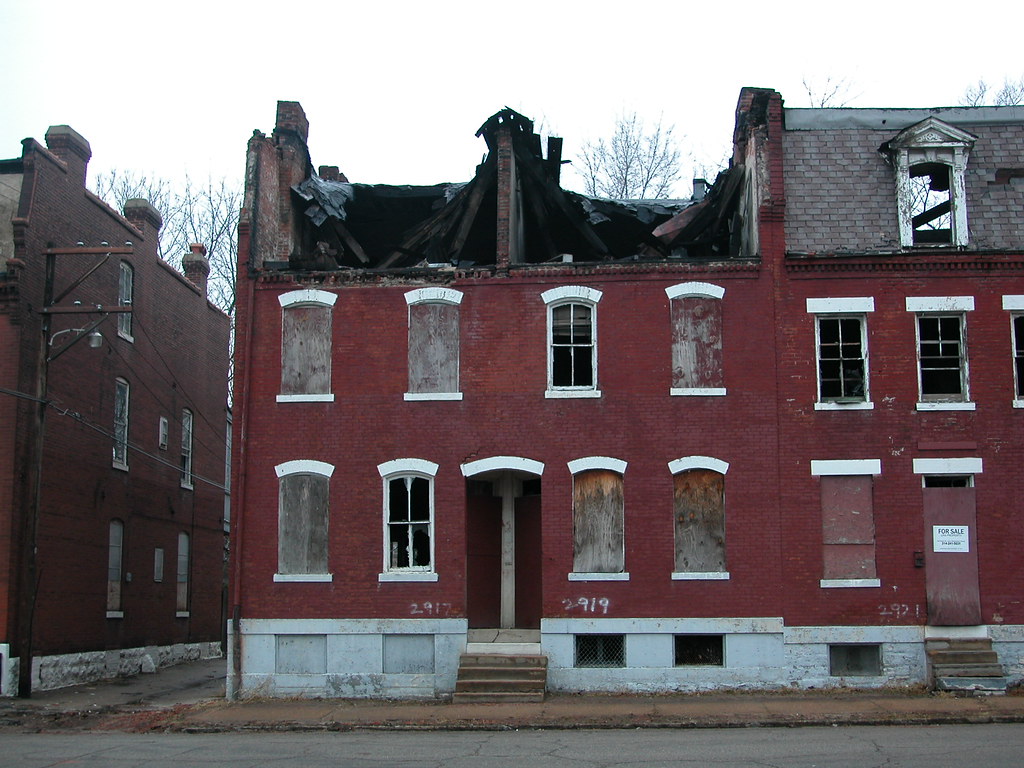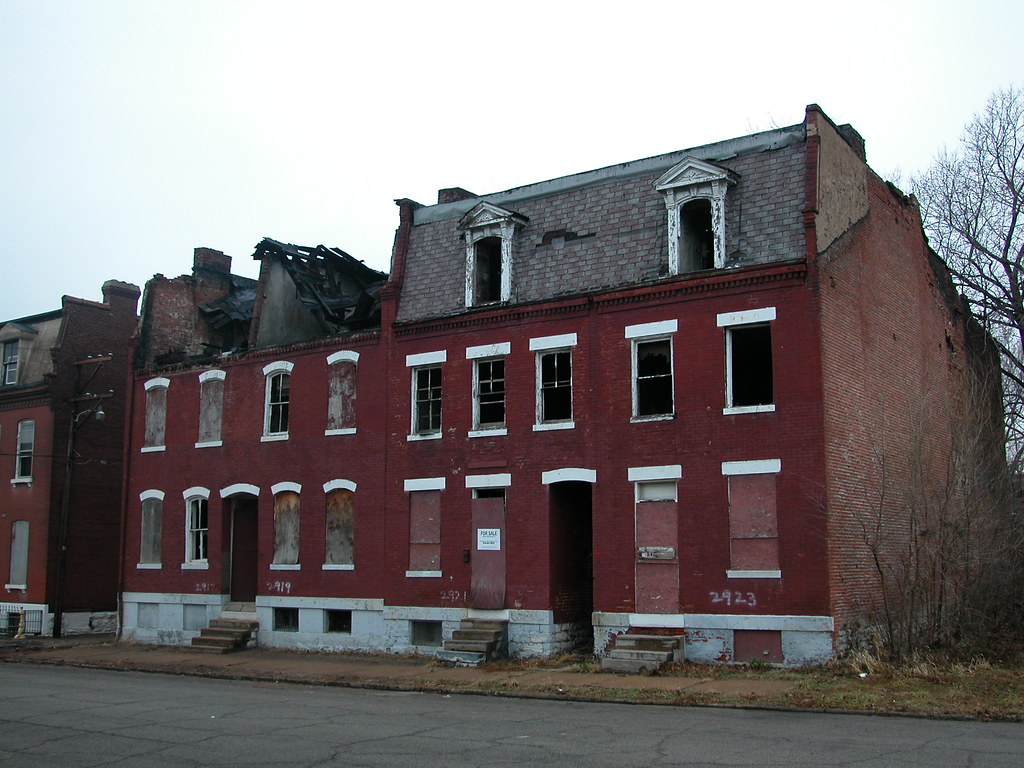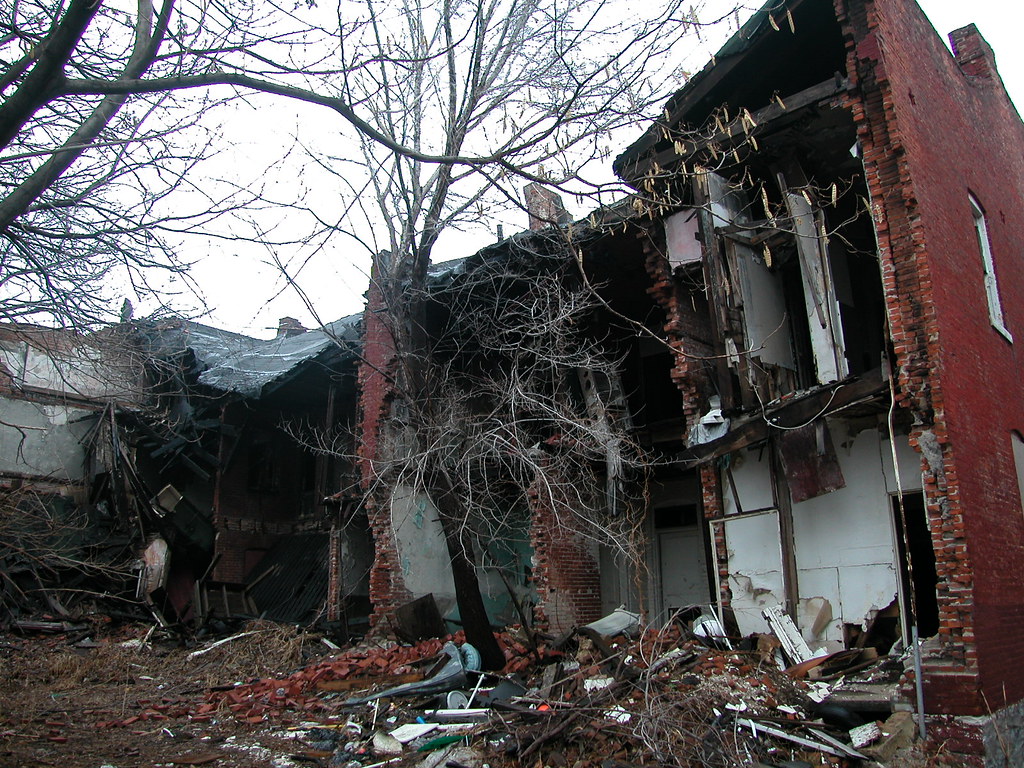by Michael R. Allen

Above is the grim scene that I encountered two weeks ago after a blustery winter storm: the vacant city-owned building at 2917-21 N. 13th Street in Old North St. Louis had suffered a roof collapse. The building, built around 1880, stands one block north from my house in the densest section of a neighborhood famed for its loss of building density. Mt neighbors and I were aghast to see what misfortune had struck a vacant building already beset by misfortune.
The building and an adjacent building to the north form a graceful row that hugs the sidewalk line. Before, the buildings’ back walls had fallen. Loose bricks on the parapet of the alley side elevation had caused the Land Reutilization Authority to consider emergency demolition, but LRA backed off after the Old North St. Louis Restoration Group reminded LRA that they were trying to market the poor buildings for historic rehabilitation.
Now, the mansard roof with its two dormers had completely collapsed outward and the flat roof above had fallen inside of this part of the row. But again the Restoration Group acted quickly. Development Coordinator Karen Heet fended off the Building Division and managed to get the debris out of the public right-of-way (a favorite demolition excuse) within 24 hours of the collapse.
Karen has posed a very interesting idea for reusing the buildings. A look at the rear of the row helps underscore her logic.

Rather than try to rebuild the buildings, which have lost significant building material, Karen would like to try something else. She suggests demolishing the interiors and retaining only the front and side elevations. Inside, a developer could build a new building on the old foundations using the existing brick walls as facades. The new building could be modular and modern, allowing Old North to offer a different housing unit while retaining the impressive street face of this row. I think that idea is worth attempting.
There are many historic buildings in the city with severe damage that are ineligible for historic rehabilitation tax credits. Some of these buildings are located outside of historic districts and are never going to eligible for such designation. Others are buildings that once were contributing to historic districts but have had so many sections collapse their rebuilding would count as “reconstruction” and not “rehabilitation” and thus would be ineligible for both state and federal historic rehab credits. Still others are badly remuddled old buildings that don’t count as contributing resources in districts.
In such cases, a straightforward attempt at replicating the old building fabric may be cost-prohibitive or simply limiting. The old Archigram concept of using masonry walls as armaments for modular housing offers an intriguing solution to situations where we have a pretty wall and little else. In other cases, more of the original building may be retained than in others. The important thing is that we don’t commit to a dichotomy in which the only common form of rehab is the tax-credit project and the only alternative is demolition for new construction. There is a full spectrum of architectural options, and saving any of the embodied energy in an old building at all is far more green than starting completely fresh.
Anyone interested in purchasing and rebuilding the buildings on 13th Street can call Karen at 314-241-5031.
More information on the row, including earlier photographs, can be found here.

One reply on “A Middle Path?”
[…] mysterious fire the night before led to the collapse of the northern section. Previous coverage: A Middle Path? (February 12, […]